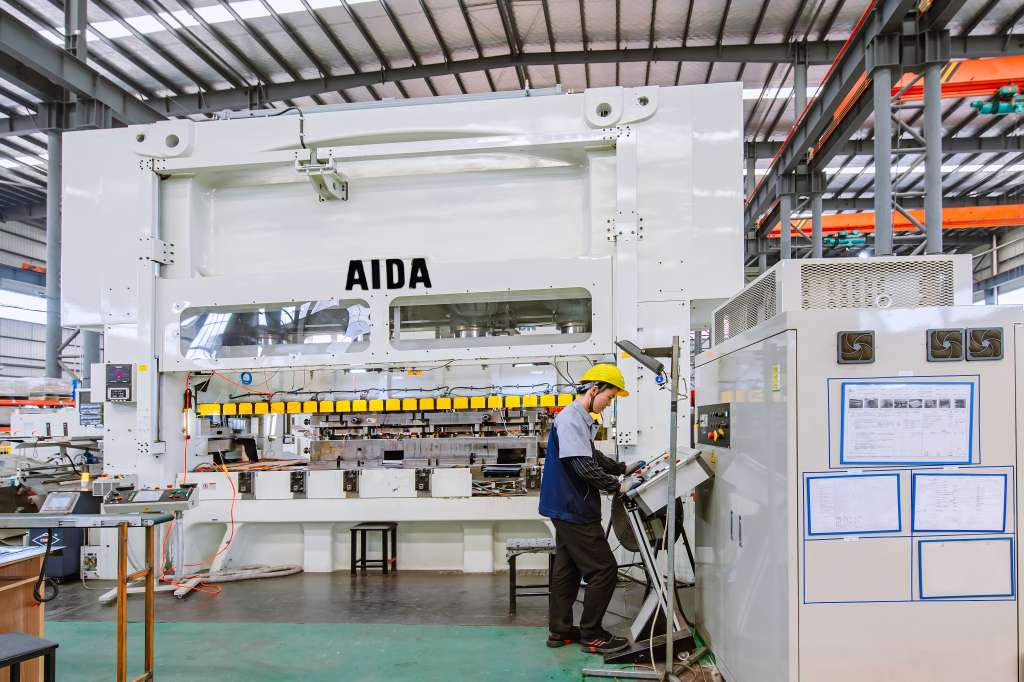The aerospace industry is changing fast. With goals for lower emissions, better fuel efficiency, and electric flight, manufacturers are now focused on making ultra-light, high-efficiency electric motors. These are key for aircraft like eVTOLs, UAVs, and hybrid-electric planes.
At the core of these motors are stator and rotor stacks—essential magnetic and structural parts. Once made for cars and factories, they now need to be much lighter, more heat-resistant, magnetically efficient, and stronger for use in aircraft.
For stator and rotor stack makers, this isn’t just a new market—it means rethinking how everything is designed, the materials used, and how they work.
The Unique Demands of Aerospace Motor Cores
Compared to industrial or automotive electric motors, aerospace motors are subject to uniquely rigorous requirements:
- Weight constraints: Every gram saved translates to improved range, lift capacity, or fuel efficiency.
- Thermal conditions: Aerospace motors must operate in extreme environments, including low temperatures and high altitudes.
- Space optimization: Integration within compact, highly optimized aircraft systems demands custom shapes and packaging flexibility.
- High power-to-weight ratio: Aerospace motors must deliver maximum output from minimal mass.
- Long-term reliability: Failures are unacceptable in flight-critical systems. Components must maintain performance across thousands of cycles.
These constraints place unprecedented pressure on motor component suppliers—particularly those manufacturing the stator and rotor cores—to innovate continuously.
Advancements in Material Engineering
One of the most significant drivers of weight reduction lies in advanced material selection. While traditional electrical steels remain common in ground-based applications, aerospace demands far exceed their baseline capabilities.
To meet aerospace standards, manufacturers are deploying:
High-Grade Silicon Steel
Electrical steel with high silicon content (up to 6.5%) reduces core loss, improves magnetic permeability, and performs well under high-frequency operations. However, its brittleness and workability challenges require specialized handling and cutting processes.
Cobalt-Iron Alloys
Cobalt-based alloys like Hiperco 50 are prized for their high magnetic saturation and mechanical strength. Though costly, they offer unmatched performance in high-speed and high-temperature aerospace motors.
Amorphous and Nanocrystalline Alloys
These materials offer ultra-low core losses, especially at high switching frequencies—ideal for aerospace inverter-fed motors. Their use remains limited to R&D and niche applications due to cost and manufacturing complexity.
Composite Backing and Lightweight Structural Elements
Integrating carbon-fiber composites or aerospace-grade aluminum into the core housing or backing plates reduces weight while maintaining mechanical strength.
Precision Manufacturing for Lightweight Stacks
The shift to lightweight, high-performance aerospace components also requires a transformation in manufacturing techniques. Precision, repeatability, and defect control are paramount.
Laser-Cut Laminations for Aerospace
Laser cutting allows manufacturers to produce thin laminations (often 0.1 mm or less) with:
- Tight tolerances (±0.01 mm)
- Reduced burrs
- High design flexibility
- Minimal deformation, essential for thin and brittle materials like high-silicon steels
Unlike traditional stamping, laser cutting supports rapid prototyping and low-to-medium volume production—key advantages in aerospace development cycles.
Advanced Stacking Techniques
Stacking isn’t just about piling laminations together. It influences magnetic flux, mechanical stability, and thermal conduction.
Leading stacking innovations include:
- Interlock stacking: Precision notching allows laminations to lock into place without adhesives.
- Bonded stacks: Using aerospace-grade adhesives ensures minimal vibration and improved heat dissipation.
- Welding and riveting: TIG or laser welding offers robust mechanical strength for rotors, while maintaining compactness.
- Automated stacking systems: Robotics reduces human error, improves alignment, and ensures consistency in every unit.
Some manufacturers are even developing hybrid stacking systems, combining bonded, welded, and interlocked layers to optimize for specific aerospace performance goals.
Simulation and Digital Twin Validation
The high cost and long validation cycles in aerospace demand advanced simulation capabilities. Stator and rotor stack manufacturers now use digital twin technology to simulate:
- Electromagnetic performance
- Thermal distribution
- Vibration and stress response
- Core loss and saturation behavior
Finite Element Analysis (FEA) tools allow engineers to optimize lamination geometry, air gap precision, and winding integration before physical samples are produced. This shortens development time, improves accuracy, and reduces cost, particularly vital in aerospace projects with tight certification timelines.
Meeting Aerospace Quality and Compliance Standards
Unlike commercial or industrial sectors, aerospace projects operate under a strict regulatory umbrella. Stator and rotor stack manufacturers must meet:
AS9100D Certification
This aerospace quality management standard aligns with ISO 9001 but includes additional risk management, traceability, and documentation requirements.
NADCAP Accreditation
For manufacturers handling welding, heat treatment, and chemical processing, NADCAP certification demonstrates compliance with aerospace-specific process controls.
Traceability and Documentation
Each component used in aerospace motors must be traceable—from the raw electrical steel or cobalt alloy to the final lamination stack. Digital records, lot control, and testing data are required at every stage.
Environmental and Reliability Testing
Components must pass:
- Thermal cycling tests (to simulate high-altitude conditions)
- Salt fog and corrosion resistance
- Vibration testing (especially for rotor stacks in high-speed electric jet propulsion systems)
- Core loss and permeability validation under operating frequencies
This commitment to quality often requires manufacturers to invest in dedicated aerospace production lines, cleanroom assembly areas, and in-house materials testing labs.
Collaborative Development With Aerospace OEMs
Aerospace motor development is rarely linear. Iterative design, integration challenges, and weight-performance trade-offs require close collaboration between OEMs and core suppliers.
Stator and rotor stack manufacturers are now positioning themselves as design partners, offering:
- Co-engineering services for custom lamination geometry
- Material advisory based on electromagnetic and thermal simulations
- Rapid prototyping via laser-cutting and modular stacking
- Customized packaging to match non-standard aerospace motor housing designs
These collaborations are helping aerospace companies push the envelope on axial-flux, dual-rotor, and hybrid-stator motor topologies—particularly in emerging sectors like eVTOL and electric helicopters.
Industry Players Leading the Way
Several advanced manufacturers are making strides in the aerospace stator and rotor stack space:
Gatorlamination
Renowned for its ultra-thin laser-cut lamination expertise, Gatorlamination supplies rotor and stator stacks tailored for electric aircraft and UAVs. The company uses 0.1 mm laminations and bonded stacks to deliver high power density and low core losses.
Zytech Dynamics
With a focus on axial-flux motors, Zytech has developed laminated rotor stacks using cobalt-iron alloys and custom-shaped stators optimized for integration into compact aerospace propulsion units.
Lamcore Aerospace Division
A division of Lamcore Industries, this group specializes in NADCAP-certified bonding and stacking processes, offering rapid design iteration services to aerospace startups.
Challenges and Future Outlook
Despite tremendous progress, several challenges remain for manufacturers serving the aerospace electric motor sector:
- Cost barriers: Advanced materials like cobalt alloys and amorphous metals are significantly more expensive than traditional steels.
- Manufacturing scalability: While low-volume, high-performance production is manageable, scaling to meet commercial electric aircraft demand will require further investment.
- Design validation cycles: Aerospace development takes years, and stator/rotor designs must remain viable throughout multi-year timelines.
- Cross-sector compatibility: Technologies designed for aerospace may also find relevance in high-performance automotive, marine, and defense applications, but will require adaptation.
The future of aerospace will depend heavily on the ability to mass-produce high-efficiency, lightweight motor cores at scale—without compromising quality or performance.
Final Thoughts
As the aerospace industry lifts off toward an electrified future, stator and rotor stack manufacturers are quietly but critically enabling the journey. Their innovations in materials, manufacturing, and simulation are shaping the motors that will power tomorrow’s skies.



